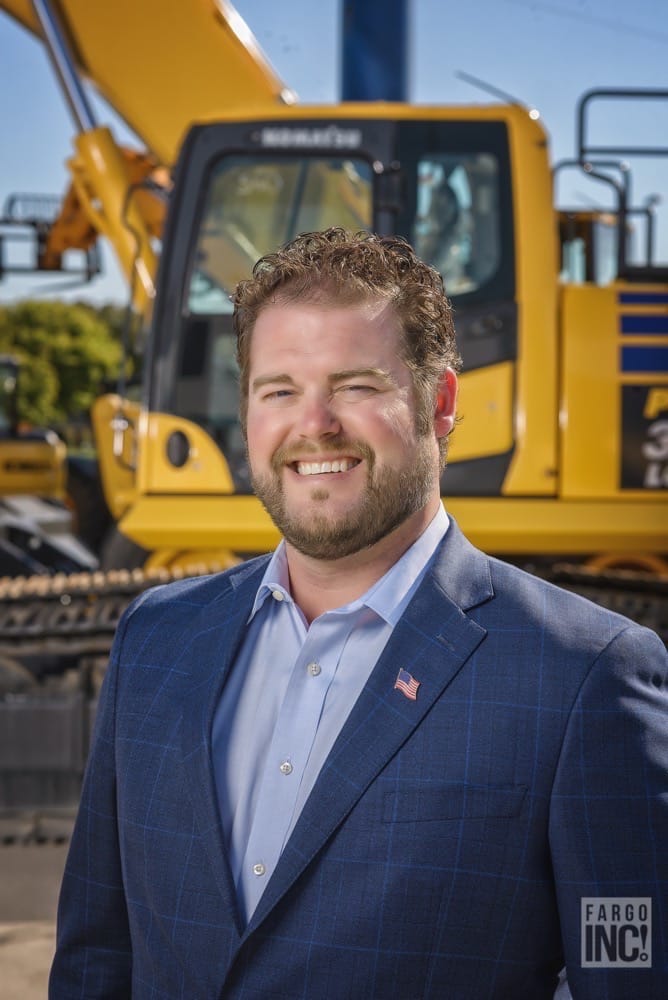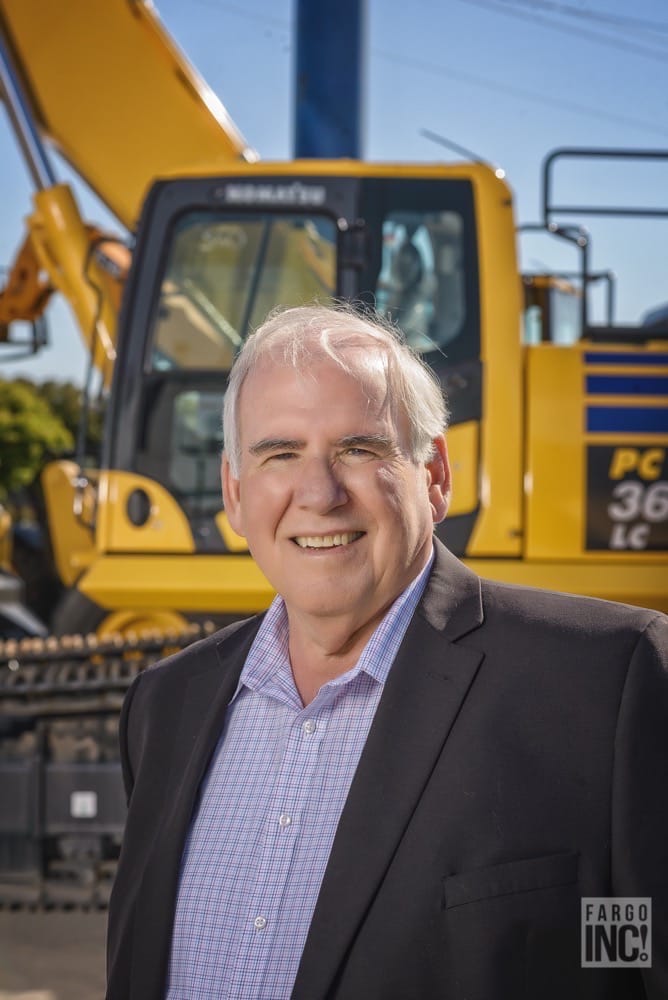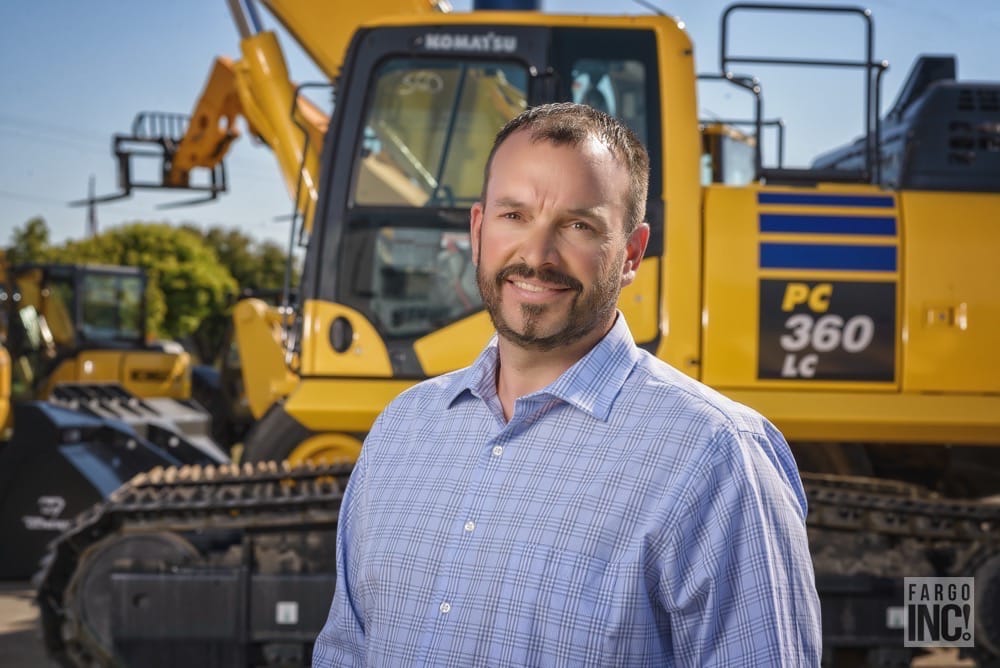PHOTOS BY J. Alan Paul Photography
“Traction: Get a Grip on Your Business” is a book originally published in 2007 by Gino Wickman that asks the question, “Do you have a grip on your business, or does your business have a grip on you?” It’s a piece of the EOS, or Entrepreneurial Operating System, puzzle. The EOS is a method that helps business owners simply and efficiently get their businesses where they envision. Implementing Traction means adding focus, discipline, and accountability to a company and making sure every employee is on the same page so as to achieve the same vision.
“If every company meeting could be like that, the business world would be a much happier place.”
Those were my thoughts as I exited General Equipment & Supplies’ conference room. It was 8:30 on a Monday morning, and I had been in a meeting for the last hour and a half. You’re probably thinking “BORING,” right? Wrong. I was invited to be a part of their weekly executive meeting to observe what implementing Traction can do for the productivity of a meeting, and, in turn, the company as a whole, and I wasn’t disappointed.
General Equipment’s journey with Traction all started in the fall of 2015 with Don Shilling, the then-president of the company, and the local CEO group to which he was a member. After reading the book, Shilling introduced it to his son, Jon Shilling, who at the time was the incoming president.
Jon read through the book and determined it had quality information, choosing portions he wanted to use in an upcoming strategy meeting, beginning the early steps of implementing Traction at General Equipment. But the journey had just begun.
We sat down with both Don and Jon Shilling, as well as team members Don Kern and Ann Pollert, to discuss why a business should take on Traction and the steps to get your company where you want it to be.
Q&A with Don and Jon Shilling


Why did you decide to use Traction?
Jon Shilling: In April 2016, with a couple weeks of Traction under our belts, we recognized we had a downturn in the economy and reviewed some critical business decisions that needed to be made. As a team, we initiated several business action steps and executed those steps but quickly realized that the process could have gone better if we had been using Traction longer.
In May, we had a meeting in Minneapolis, where we met Justin Cox, a professional Traction facilitator. He basically presented and said, “I’m not trying to sell you on this, but I just want you to understand the idea of Traction and the process.”
After sitting through that meeting, we could clearly see having a facilitator was a crucial part of implementing Traction successfully. I knew I didn’t want to look back two years from now and say, “What was that Traction thing we were trying to do again?” I thought we should invest in the two-year process. The investment would be worth it to get us doing it correctly and ingrained so that we didn’t fall away or only use pieces from it. Even if you’re not going to use a facilitator, it should be followed as closely as possible for the best results. Each part is a piece of the puzzle put in the process for a reason.
Don Shilling: Over the course of my career, I’ve read a lot of business books. Typically, you read the books, glean out of them what you want, get your group together, and, on a white board, launch into it and what you’re going to do. Traction is a lot more formal of a process, and I think you need to commit to the process 100 percent, and when you do, I think you get the rewards from it.
What was the next step?
JS: One aspect of Traction is to have a company speech where you talk about your core values, why you are instilling them, why you believe in them and why everybody else who works in the office should have the same core values. It’s about finding the right people and putting them in the right seats. We believe everybody who works here fits in with our core values, and now, when we hire people, we basically try to find out if they meet with all our core values as well. That just creates a company culture of people who are not the same but are like-minded, enjoy the same things, have a passion for what they are doing, care about the customers and care about the company they work for. It’s been nine months or so that we’ve been doing this, and we’ve found a big change in people’s attitudes toward our values.
Now that you know the basics, how do you continue to implement Traction?
JS: Now it’s time to really hone in on it. One thing I’m currently implementing is putting out a quarterly video for the employees to get out in front of everyone with our core values. One of the ideas often talked about in Traction is that people don’t hear what you say to them until they’ve heard it seven times. If you don’t tell them seven times, they never heard it the first time. So we try to put things quarterly now in front of our employees so they see what we are talking about, see our core values and see other employees exemplifying those core values.
DS: I think what’s going to change about the management style with Traction is you’re setting goals, and then you try to attain the goals. Too much in the past, we were relying on financial information that was basically historic. For example, you would say, “Our goal was to get to so many dollars of sales by the end of June,” and then by the end of June when you weren’t there, you didn’t know what happened.
With Traction, when you’re looking at a goal that you’ve set, but you’re reviewing it each week. Then, you’re looking at the cause and effect of that goal. You start managing to the future rather than looking at the historic numbers of the past.
JS: That’s our scorecard part of our Level 10. We set quarterly rocks, or goals, and run through those and the scorecard every week to determine if we are on target. In our scorecard, we are looking at those numbers and seeing trends. If we’re seeing down trends toward certain revenue numbers we’re trying, we can try to fix it now versus waiting until the end of the quarter and seeing that we didn’t hit our goal. I think it allows us a better picture. It also forces us to look at the numbers every single week. Whereas, in your day-to-day, we might think, “Well, I’m too busy to look at the numbers,” so you don’t see any trends.
We are also in the process of setting up rocks for our next level down management group, too. Everybody at some point or time should be in a Level 10 meeting of some sort, even if it’s our technicians out in the shop. They may not have an hour-and-a-half Level 10 like we do. It might instead be a 15-minute tool box discussion at the start of each week so their foreman can say, “This is what I see upcoming for the week, here is what you’re plan is, these are the customer’s machines you’re going to be working on and here is what I need to see from you.”
What’s Your Favorite Part About Traction?
General Equipment & Supplies President Jon Shillings’ favorite part about Traction is the Level 10 meetings.
A Level 10 meeting agenda looks like this:
- Segue (5 min) Each person attending the meeting shares his or her personal and business “best,” creating an atmosphere of community.
- Scorecard (5 min): On a weekly basis, the scorecard is reviewed to make sure the company is on track. It includes anything that can be measured and is a handful of numbers that can tell you at a glance how your business is doing. If there is an issue, it drops down to the IDS portion of the meeting and isn’t discussed until then.
- Rock Review (5 min): Rocks are short-term goals that contribute to achieving the company’s vision. Meeting attendees go around the table and let the group know if they are “on” or “off” their rock. Again, if there is an issue, drop it down to IDS.
- Customer/Employee Headlines(5 min): These are quick one- or two-sentence “headlines” of what is going on with different customers and employees in the company. Issues drop down to IDS.
- To Do List (5 min): These five minutes are to review the previous week’s to-dos to make sure they all got done.
- IDS (60 min): This stands for identify, discuss and solve. This is the issue solving portion of the meeting. Choose the top three issues and tackle those first. Start with the No. 1-rated issue, and identify the problem, discuss the solutions and solve the issue. If all three get solved, pick the next top three issues and so on.
- Conclude (5 min): No matter where the meeting is at, always conclude with five minutes left. The issues list will still be there next week to tackle again. Recap the to-do list, share any messages that need to get out to the rest of the company, and lastly, go around the table and each attendee should rate the meeting one to 10. If the meeting is below an eight, the team member needs to give a reason why.
“More specifically, I like the organization of the Level 10 meeting,” Jon says. “The issues list and going through it and talking about certain things at certain times—f there’s something more to talk about, it goes down into the issues list, and we don’t talk about it until we get to that area. And then we rate it based on how important the topic is.
“If we have a major issue up there, we may talk about it for the entire 60 minutes of the issue-solving part of the process. We may not get to any of the other ones. They’ll just stay on that list, and we go back to them next week. That was initially my favorite part, just the structure, how organized it makes you and how focused it keeps you on the topic at hand.”
Team-Member Reactions
Each team member responded differently to General Equipment & Supplies implementing Traction. “There was a fair amount of resistance, and Traction talked about that so it wasn’t a surprise,” Jon Shilling says. “They say that over the two-year period you can have up to 30 percent turnover. It doesn’t happen immediately, but over time, people realize they don’t fit with the company culture and leave, which is better for both them and the company in the long run.”
These are the views of two team members, one with concerns and the other on board from the get-go, and how their opinions have changed or solidified over time.

What were your initial reservations?
Don Kern: When you have a manager tell you what they think is best for you, coming up with some new idea, saying, “Okay, we’re going to do this now,” but then never following through, it’s very frustrating. You’re told to do it, but there is nothing concrete to go by. Traction first came across that way to me.
What changed your mind?
Kern: Once I started learning and reading about it, my opinion changed. I read the book after the initial meeting we had, and then we had our first meeting with Justin Cox, a Traction facilitator. After that meeting, I started understanding it. That’s when I decided for myself that it would be good for me because it would help me hold myself accountable to get tasks done. It’s fairly simple and easy to grasp so it makes it easier to buy into.
What are some benefits and difficulties of Traction?
Kern: If you’re going to do something, then follow through with it. It’s difficult at first because you need to look hard and critically within yourself and your organization.
A major benefit is that every week is the same during our meetings. Nothing is a surprise, which is something that’s always bothered me. Every week we come to the meetings and start off with our personal and business best from the previous week. It gets everybody feeling more relaxed and opens up the line of communication between people in the organization.
We never really knew how to efficiently share ideas before, and now we have a method for doing that. It also has helped us redefine our existing core values. We’ve always had the values we’ve had, but they were embedded within “wordy” language. Now, they are easy to understand.
How do you think the work atmosphere has changed?
Kern: When you’re running a business of this size, it’s difficult because you can’t be the one person who’s doing everything and calling all of the shots. You have to empower people to take ownership of their positions, making the best calls they can and taking care of the customers. With Traction, employees are given the freedom to make decisions based on our core values. If this is happening, no one is going to come down hard on you because you are doing what is best for the company and the customer. I think people feel more comfortable in their day-to-day and are able to take ownership of the business themselves.

What was your experience before Traction?
Ann Pollert: My experience was a little disorganized and lacking communication, especially going down from the top to the bottom levels, getting to all of the individuals who should be aware of the information.
What about Traction made you excited to jump in?
Pollert: I was excited because of the accountability. You’re following a process and have something that everybody is doing. I think General Equipment is a phenomenal company, but you get set in your ways. They did things the way they had always done them instead of realizing changes in the culture and the workforce. I think Traction helps us to efficiently transition our ways of communicating, engaging and involving all of the employees.
What do you like most about Traction?
Pollert: I have noticed a change in communication. Everyone is getting together and having meetings. I’m included in a Level 10 meeting, and I get so much out of it. Everything is saved until that Monday meeting, and it’s a more efficient way of communicating.
How do you think the atmosphere has changed?
Pollert: I think it’s more positive. When you know what’s going on, when you hear things, you have more confidence in your role. You know how decisions are made and you are involved in the discussion. You’re able to come forward if you have issues or points of discussion.
Attending the Level 10 meeting at General Equipment completely changed my view of how a company can run effectively and practically. Strong communication was constant, tangents weren’t a part of the conversation and the team members in attendance seemed closer than ever, getting down to business but also saying, “congratulations” or “good job” when applicable. Soon after the meeting, I even read the book and now have a different perception of every past management style I’ve ever worked under.
Maybe you don’t think Traction is worth the time, but what if it is? My experience tells me it’s worth a shot!








